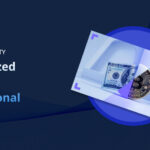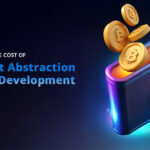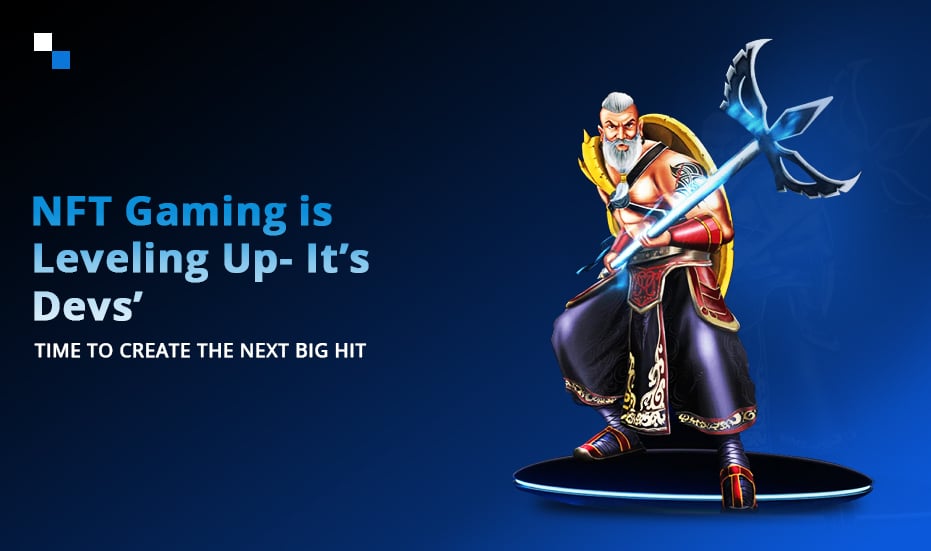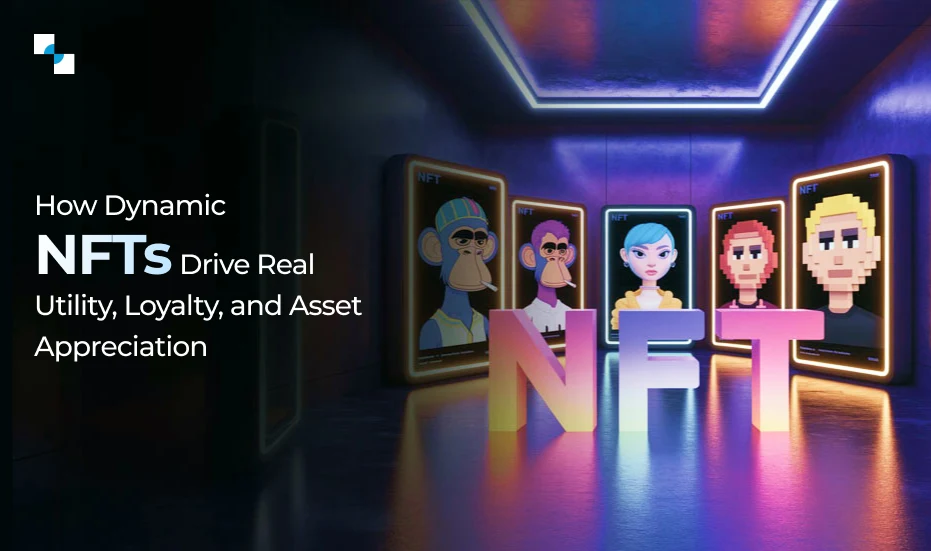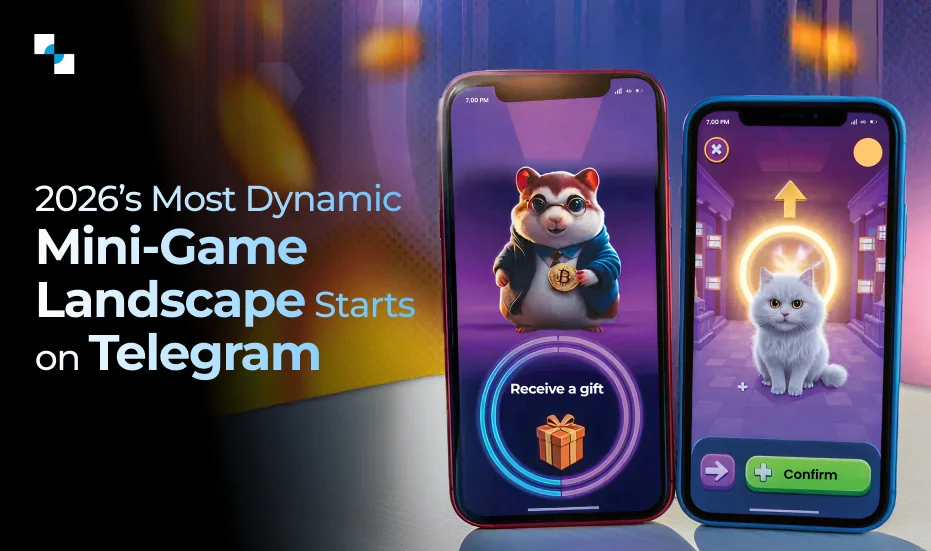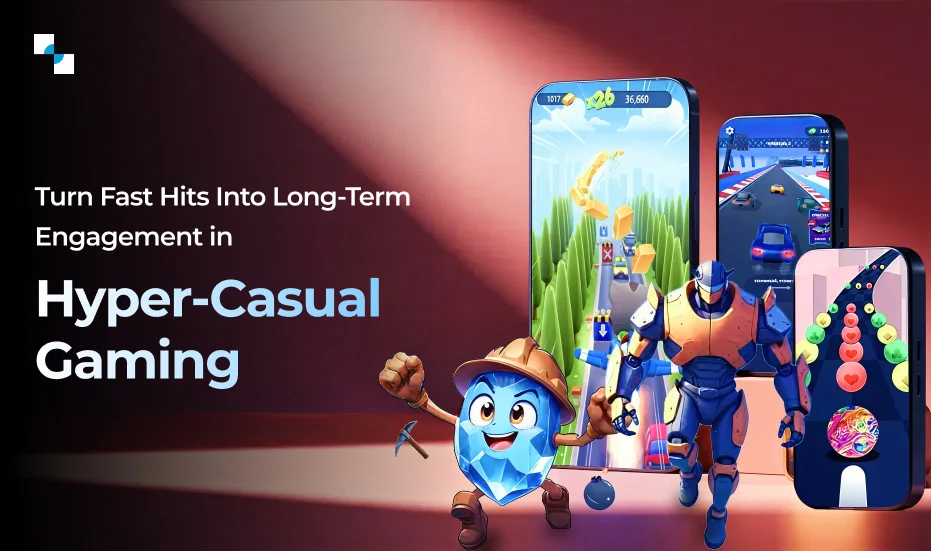The gaming industry is undergoing a seismic shift, fueled by the phenomenal expansion of NFT gaming. Gaming now isn’t just about escaping reality—it is about owning, earning, and shaping it, and developers are the architects of this revolution.
However, let’s cut through the hype. Undoubtedly, NFT game development is booming, but how do you avoid becoming another forgettable clickbait headline? How do you design a game that’s fun first and “financialized” second? What separates a cash-grab NFT project from the next Axie Infinity or Decentraland?
Here’s the answer: Players want adventures that respect their time, creativity, and digital sovereignty. They want to wield a dragon-slaying NFT sword because it means something—not just because it’s a speculative asset. Whether you’re a solo developer coding late into the night or part of a visionary NFT game development company, here, we’ll break down the hows, whys, and what’s next in NFT gaming. Let’s dive in.
The Rise of NFT Gaming in 2025
1. Market Size & Growth Projections
A. Global NFT Gaming Market Value:
- Estimated at USD 0.54 trillion in 2025, projected to reach USD 1.08 trillion by 2030 at a 14.84% CAGR.
- In-game NFTs alone are expected to grow from USD 3.64 billion (2022) to USD 15.46 billion by 2027.
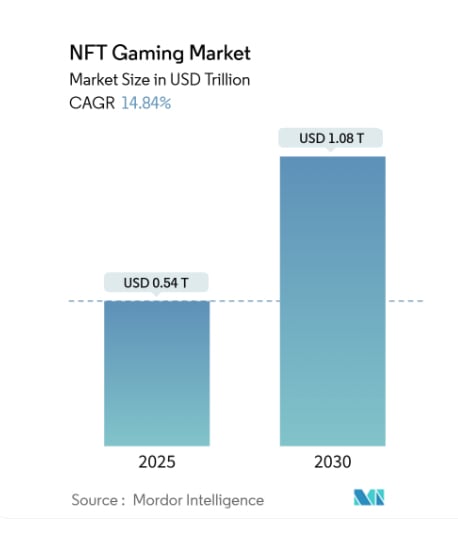
B. Overall NFT Market: Predicted to grow by USD 84.13 billion from 2025–2029, driven by demand in gaming, digital art, and metaverse integration.
2. Key Drivers of Growth
A. Play-to-Earn (P2E) NFT game development Mechanics:
- Games like Axie Infinity and Splinterlands have popularized tokenized rewards, enabling players to earn real-world income. According to Demandsage NFT statistics, over 35% of eSports enthusiasts express interest in NFT gaming.
- The P2E model is revolutionizing gaming economies, with 794,763 NFT buyers and 377,711 sellers globally in 2024
B. Metaverse Integration:
- Platforms like The Sandbox and Decentraland are merging gaming with virtual real estate, fostering NFT-driven economies. For example, The Sandbox partnered with Saudi Arabia’s Sandsoft to expand its MENA user base in 2023.
What Developers Need to Know About NFT Game Development?
1. Planning the NFT Game Structure
A. Exploring Different NFT Gaming Genres
The genre choice dictates everything—from asset design to community engagement. Let’s break down popular 2025 genres:
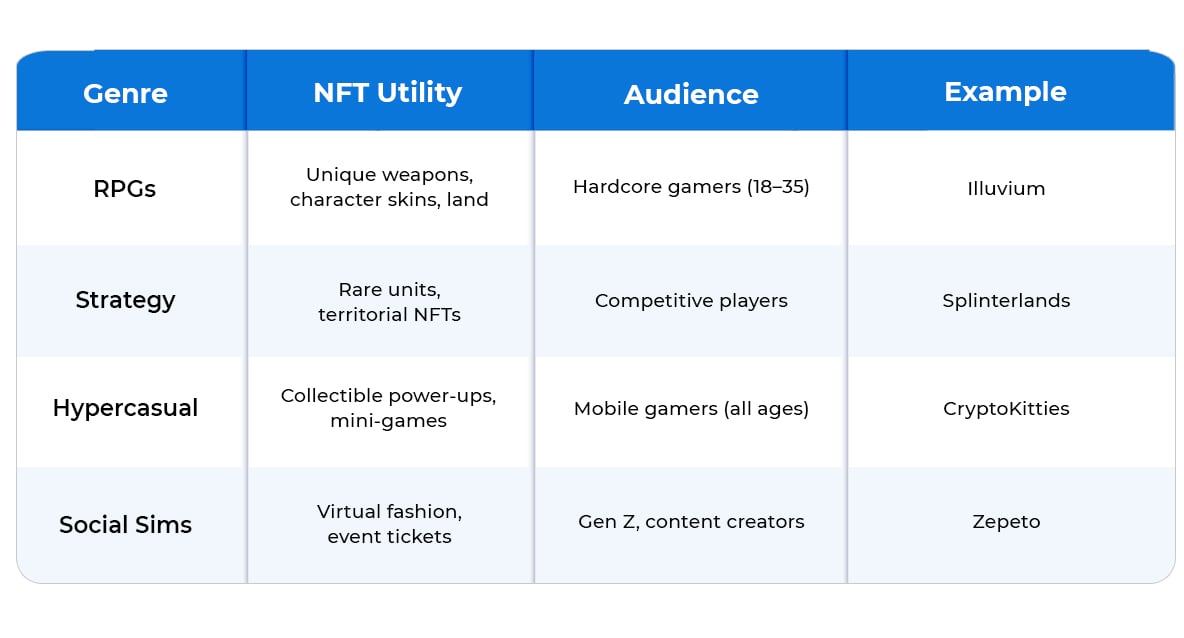
By understanding player psychology, NFT game development experts can design a more engaging experience that encourages long-term participation.
For reference: Axie Infinity (Strategy/RPG hybrid) succeeded by blending Pokémon-style gameplay with a P2E model, but newer titles like Aavegotchi (DeFi + Tamagotchi) highlight the demand for genre fusion.
B. Defining the Monetization Strategy
Monetization in NFT gaming is a delicate dance between player satisfaction and revenue. Here’s a comparison of models:
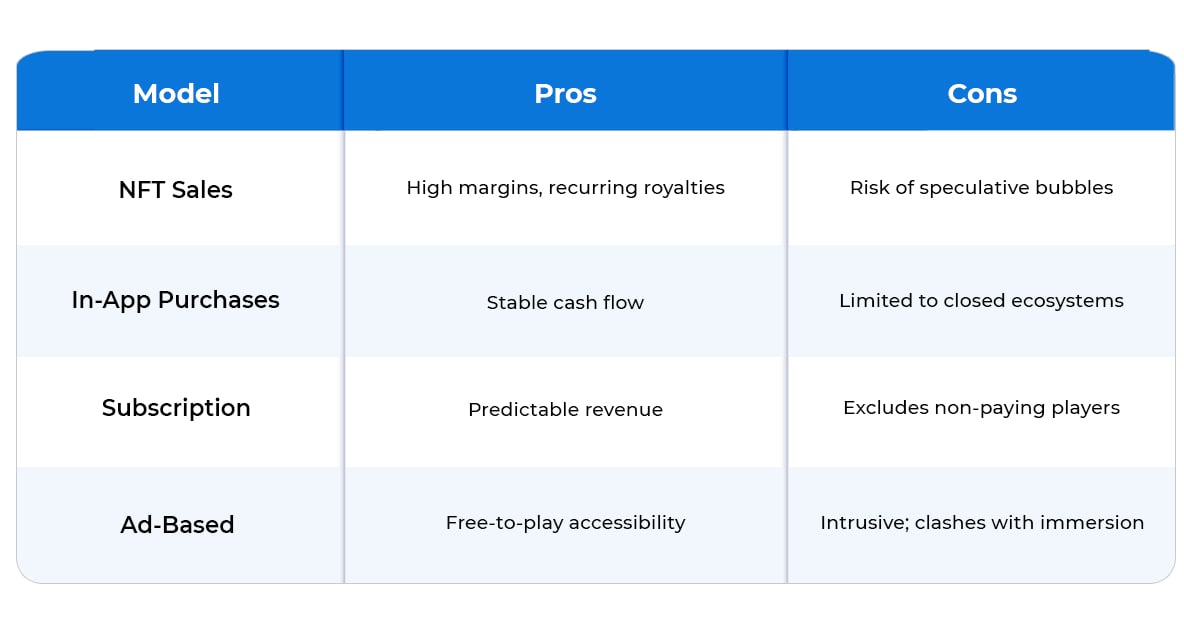
C. Establishing a Token Economy
A robust token economy ensures long-term engagement. Consider these pillars:
- Dual-Token Systems:
- Utility Token: In-game currency (e.g., $SAND in The Sandbox).
- Governance Token: Voting rights (e.g., $ILV in Illuvium).
D. Managing Token Inflation and scarcity
To prevent excessive token inflation, developers can:
- Implement token sinks, such as entry fees for special tournaments.
- Introduce NFT-based consumables that require players to spend tokens.
- Cap the total supply of in-game currency.
Example: Decentraland uses a burn mechanism for LAND NFT auctions, ensuring MANA tokens remain scarce.
2. Selecting the Right Technology Stack
1. Choosing the Blockchain
The blockchain you select will impact transaction speeds, gas fees, security, and player adoption. Developers must assess multiple factors before finalizing a blockchain for NFT game development.
- Ethereum offers unmatched security and a vast ecosystem, but its complexity can be a challenge for newcomers.
- Solana, known for its high speed and ultra-low fees, enables fast transactions but raises concerns about centralization.
- Polygon provides an Ethereum-compatible and eco-friendly solution, though it relies on Ethereum’s infrastructure.
- Avalanche offers customizable subnets for game scalability, though its decentralized app (dApp) ecosystem is still growing.
Each blockchain has its trade-offs, and the choice depends on the specific needs of the NFT Gaming project.
2. Decision Factors:
- Target Audience: Ethereum suits high-value NFT collectors; Solana fits microtransaction-heavy games.
- Sustainability: Polygon’s carbon-neutral stance appeals to eco-conscious players.
- Interoperability: Chains supporting Cross-Chain Interoperability Protocol (CCIP) enable multi-chain NFT transfers.
For an NFT game development company, integrating a scalable and cost-effective blockchain can significantly enhance player adoption and in-game transactions.
3. Game Engines for NFT Development
While blockchain manages asset ownership, the game engine controls gameplay mechanics and graphics. Selecting the right engine is essential for crafting a seamless NFT gaming experience.
Unity dominates mobile and indie NFT game development with plugins like Enjin SDK and ChainSafe Gaming. Its C# scripting simplifies smart contract integration.
It is versatile, mobile-friendly, and offers strong Web3 SDK support. It is apt for 2D/3D NFT games, and metaverse projects.
Unreal Engine 5 is preferred for AAA titles requiring photorealistic graphics (e.g., Star Atlas). However, its C++ backend demands blockchain-savvy developers. It is apt for Immersive RPGs, and metaverse-based games.
Emerging Tools:
- ReadyPlayerMe: Cross-game avatar NFTs.
- Moralis: Backend API for real-time NFT metadata updates.
- Enjin SDK – Facilitates NFT creation and management in Unity.
- ChainSafe Gaming SDK – Enables smooth blockchain integration across multiple engines.
With these tools, the NFT game development company can efficiently deploy Web3 functionalities while ensuring a seamless gaming experience.
4. Smart Contract Development
Smart contracts serve as the foundation of NFT gaming, enabling asset ownership, in-game transactions, and decentralized governance. Writing secure and efficient smart contracts is crucial for game stability. Security is paramount in NFT game development, as poorly written smart contracts can expose players to exploits.
Best practices include:
- Audit Early: Use firms like CertiK or OpenZeppelin to detect vulnerabilities.
- Gas Optimization: Write efficient code to reduce transaction fees (e.g., batch minting).
- Compliance: Adhere to ERC-721 (NFTs) or ERC-1155 (semi-fungible tokens) standards.
Example: CryptoPunks uses ERC-721 for its 10,000 unique avatars, while Gods Unchained leverages ERC-1155 for customizable cards.
A well-designed smart contract structure ensures trust, security, and long-term stability for any NFT game development company.

3. Creating Engaging Gameplay
No matter how advanced the technology behind NFT gaming is, players won’t stick around unless the gameplay is genuinely engaging. In NFT game development, the challenge is not only to build an exciting game but also to seamlessly integrate blockchain mechanics without making them feel like a hurdle.
A successful NFT game development company must focus on three key areas: user experience (UX), immersive game design, and social interaction. Let’s break these down.
1. Prioritizing User Experience (UX)
In NFT Gaming, seamless UX is non-negotiable. Players expect intuitive interfaces that abstract blockchain complexities. For example, Decentraland masks wallet interactions during exploration, letting users focus on gameplay.
To enhance UX, developers should:
- One-Click Transactions: Integrate auto-signing wallets (e.g., MetaMask Snap) for instant NFT purchases.
- Tutorials for Newcomers: Guide players through minting, trading, and staking without jargon.
- Gas-Free Onboarding: Use layer-2 solutions like Polygon to subsidize initial transactions.
For an NFT Game Development Company, the goal should be to make blockchain feel invisible while letting the game shine.
2. Building an Immersive Game World
Visual and auditory excellence separates successful NFT game development projects from cash grabs. In 2025, players demand:
- AAA-Quality Graphics: Leverage Unreal Engine 5’s Nanite for detailed NFT assets.
- Dynamic Soundscapes: Adaptive audio that reacts to NFT ownership (e.g., unique theme music for rare items).
- Story-Driven Quests: Many NFT gaming projects focus too much on earning potential and neglect storytelling. A gripping storyline with evolving lore, character backstories, and quest-based progression keeps players engaged. Embed NFTs into narratives. Imagine a sword NFT that unlocks lore about ancient battles.
Example: Illuvium combines Unreal Engine 5’s visuals with sprawling lore tied to its NFT creatures, creating emotional investment.
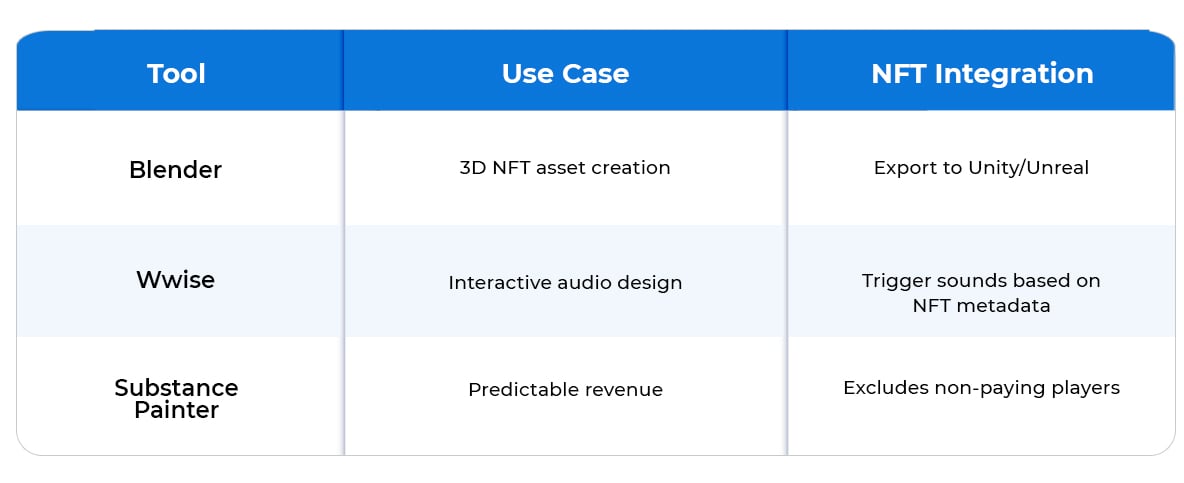
3. Incorporating Social and Competitive Features
Community is the lifeblood of NFT gaming. The most successful NFT game development projects thrive because of their engaged player base.
Implement features that foster collaboration and rivalry:
- Guilds and Alliances: Allow players to pool NFTs for shared rewards (e.g., Yield Guild Games).
- Live Tournaments: Host blockchain-verified competitions with NFT prizes.
- Creator Economies: Let players design and sell NFT mods/maps (e.g., Roblox meets Web3).
Splinterlands retains players through daily ranked battles where NFT card upgrades directly impact leaderboard standings.
4. Ensuring Sustainability and Security
As NFT Gaming continues to evolve, developers must address two critical concerns—sustainability and security. For an NFT game development company, balancing innovation with responsible development is key to long-term success.
1. Reducing Environmental Impact
The “crypto is bad for Earth” narrative still haunts NFT game development. Mitigate this with:
- Eco-Friendly Blockchains: Use Polygon (carbon-neutral) or Algorand (pure proof-of-stake).
- Carbon Offsetting: Allocate a % of NFT sales to renewables (e.g., Moss. Earth partnerships).
- Energy Dashboards: Show players their environmental footprint per transaction.
Blockchain Energy Comparison (kWh/Txn):
- Ethereum (PoS): 0.01
- Solana: 0.0006
- Bitcoin: 4,500
2. Protecting User Assets
Security breaches can doom even the most promising NFT gaming project. A key risk in NFT game development is wallet security.
Developers can enhance security by:
- Integrating Secure Wallet Solutions – Implementing hardware wallet compatibility (Ledger, Trezor) reduces the risk of online theft.
- Using Multi-Signature Authentication – Requiring multiple approvals for high-value transactions prevents unauthorized asset transfers.
- Providing User Education – Many security breaches occur due to user error. An NFT Game Development Company should include in-game security tutorials and phishing warnings.
Did You Know? Sky Mavis (creator of Axie Infinity) rebuilt its Ronin Bridge after a $600M hack, emphasizing zero-trust architecture.
A strong security infrastructure reassures players, fostering trust and long-term engagement in NFT gaming.
Hire the Top NFT Game Development Company
The NFT gaming revolution is here, and 2025 will reward developers who blend creativity with technical rigor. Whether you’re a startup looking to launch your first blockchain game or an established studio expanding into Web3, partnering with a top-tier NFT game development company can make all the difference. The next Axie Infinity could be yours—if you craft worlds worth owning.
A professional NFT game development team provides a wide range of services, including:
- Game Design & Development – 2D, 3D, and metaverse-based games
- Smart Contract Development – Secure and audit-ready contracts for in-game assets, marketplaces, and governance.
- NFT Marketplace Integration – Seamless platforms for trading, staking, and exchanging in-game NFTs.
- P2E Economy Development – Tokenomics design that ensures sustainable rewards for players.
- Cross-Platform Compatibility – Games optimized for web, mobile, and desktop.
With expertise in blockchain, game mechanics, and player engagement, our professional team at Antier ensures your game stands out in the competitive Web3 landscape. Schedule a consultation with our experts today.
